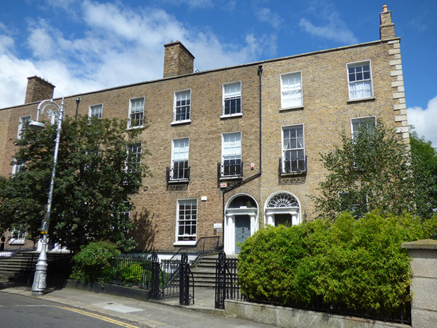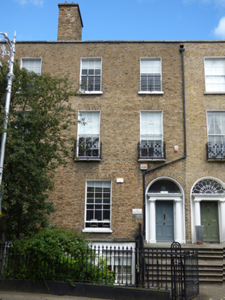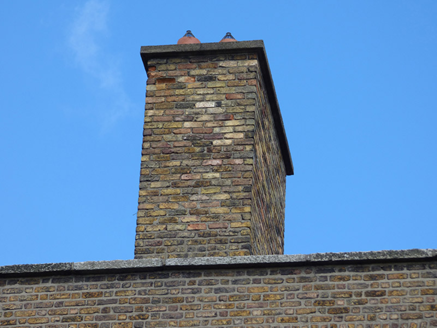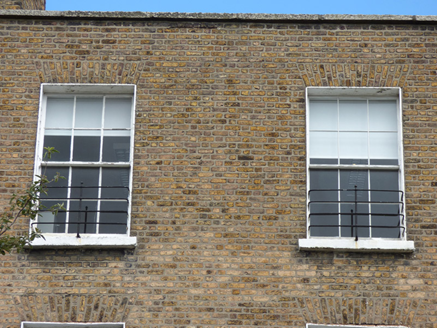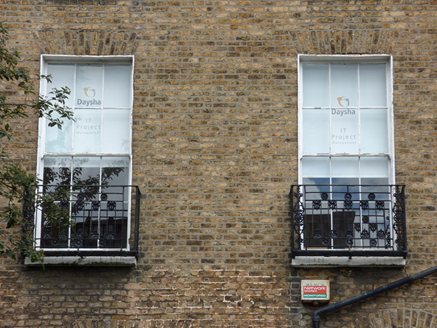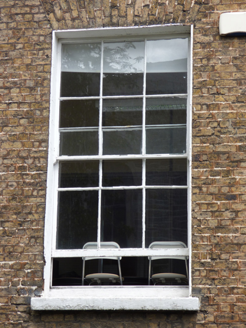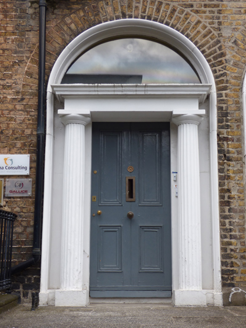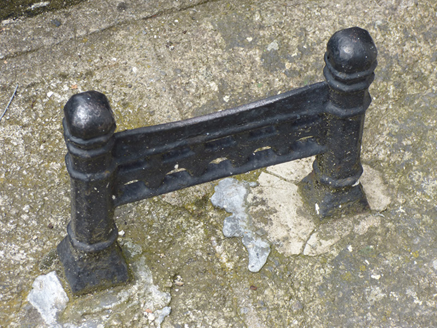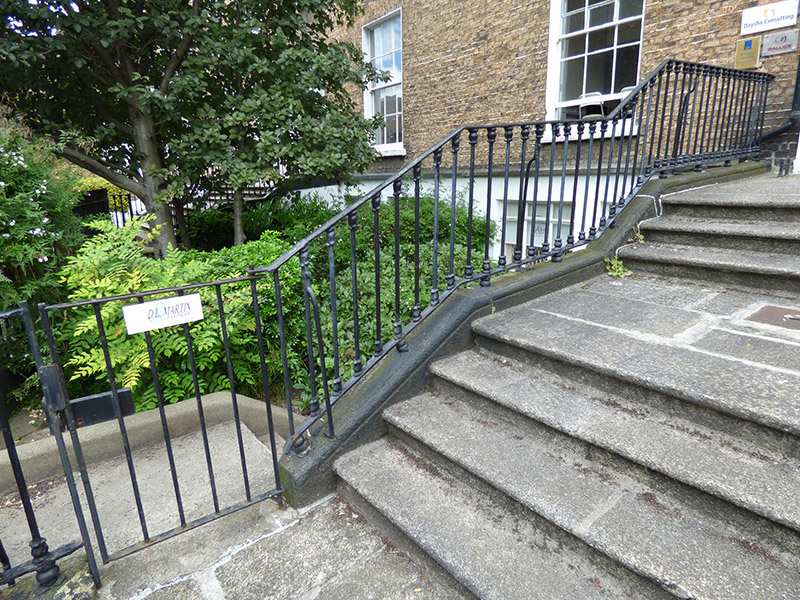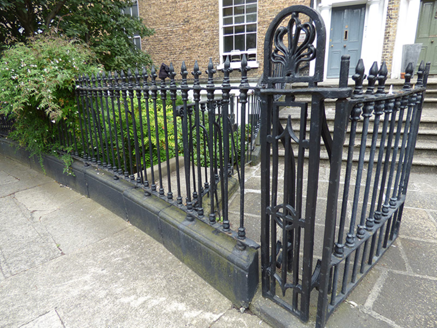Survey Data
Reg No
50100577
Rating
Regional
Categories of Special Interest
Architectural, Artistic
Original Use
House
In Use As
Office
Date
1835 - 1840
Coordinates
317070, 233271
Date Recorded
29/07/2016
Date Updated
--/--/--
Description
Attached two-bay three-storey former house over basement, built c. 1836 as one in terrace of ten (Nos. 1-10), having gable-ended two and three-storey return to east end of rear. Now in use as offices. M-profile pitched artificial slate roof, rear span higher than front span, hipped to east of front span, with terracotta ridge tiles, brick parapet with granite coping and parapet gutters, brown brick chimneystacks to west party wall with concrete copings and replacement terracotta pots, brick chimneystack to return, and shared replacement uPVC downpipe. Flemish bond brown brick walling, with vestiges of wigged pointing to ground floor, on painted plinth course over painted ruled-and-lined rendered basement walling; English garden wall bond brown brick to rear elevation. Square-headed window openings with painted masonry sills and painted rendered reveals. Six-over-six pane timber sliding sash windows with convex horns to ground floor and upwards, and paired early twentieth-century metal-framed casement windows to basement. Decorative cast-iron balconettes to first floor windows and wrought-iron window-guards to top floor. Apparently timber sash windows to rear with varied three-over-three pane, six-over-six pane and eight-over-eight pane arrangements, with round-headed stairs window to west bay. Round-headed door opening with moulded surround, and painted masonry doorcase comprising engaged fluted Doric columns, plain entablature, plain fanlight and bolection-moulded four-panel timber door with brass furniture. Shared granite-paved entrance platform with decorative cast-iron boot-scrape and two stages of three and four bull-nosed granite steps and flanked by decorative cast-iron railings on painted moulded granite plinth. Decorative spear-headed cast-iron railings on painted moulded granite plinth to front boundary with matching pedestrian gates with round-headed openwork cast-iron piers. carparking and modernized two-storey mews building to rear of plot.
Appraisal
A Georgian-style house, forming part of a cohesive terrace, Nos. 1-10 Mount Street Crescent. Although modest in scale, compared with the adjoining houses on Mount Street Upper, the group features high basements with ground floors accessed via long flights of granite steps. The front elevations exhibit well-balanced proportions typical of the period and are enlivened by Greek Doric doorcases, pretty fanlights and decorative ironwork. The street-line is stepped to the west at No. 1, effectively marking the junction between Mount Street Upper and Mount Street Crescent. The terrace was completed in 1836-7, with eight of the houses constructed by a barrister, Joseph Gabbett, and the remaining two by Daniel Litton and a Mr Hutton. Largely well-retained, the terraced group is set back from the street-line to provide an oval-shaped space within which stands St. Stephen's Church, a building that dominates the streetscape and creates an interesting centrepiece terminating one of the key vistas of Georgian Dublin.
